GE’s hypersonic rotating detonation engine breakthrough could change aviation forever
- By Alex Hollings
Share This Article
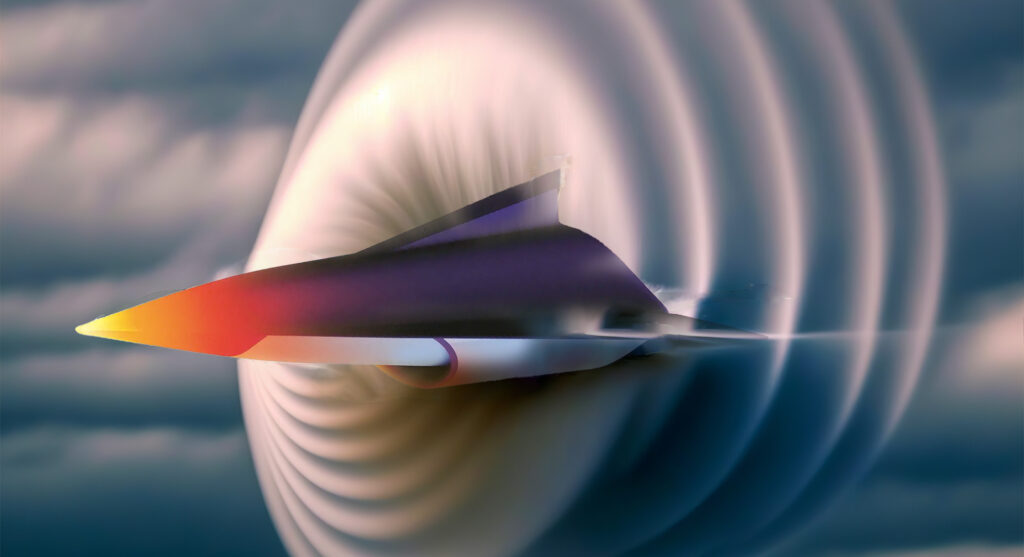
The race to field reusable hypersonic aircraft got a whole lot hotter last month, with GE Aerospace announcing a breakthrough in high-speed jet engine design that could potentially allow conventional aircraft to fly at speeds that exceed Mach 10.
According to GE’s press release, the company recently demonstrated “what is believed to be a world-first hypersonic dual-mode ramjet (DMRJ) rig test with rotating detonation combustion (RDC) in a supersonic flow stream.” This means leveraging rotating detonation combustion — a far more efficient means of power production — within a dual-mode ramjet (also sometimes called a dual-mode scramjet). Ramjets and scramjets are air-breathing jet engines that don’t function well at low speeds but can power an aircraft or weapon from around Mach 3 up to Mach 5 and well beyond.
This would be a significant development toward producing dual-mode ramjet/scramjets with far greater range, but could represent an even bigger breakthrough if combined with a similarly Rotating Detonation Combustion-equipped turbofan engine in what’s commonly called a turbine-based combined cycle (TBCC) propulsion system. And those wheels are already turning. GE first acknowledged that it was working with the Defense Advanced Research Projects Agency (DARPA) and the Air Force Research Lab (AFRL) on an RDC-equipped TBCC engine in June of this year.
“GE engineers are now testing the transition mode at high-supersonic speeds as thrust transitions from the RDE-equipped turbine and the dual-mode ramjet/scramjet,” GE Aerospace Military Engines CEO Amy Gowder told Aviation Week.
This TBCC engine would combine four different types of air-breathing jet engine technologies into a single system that would allow an aircraft to take off and land under conventional turbofan power, while also achieving hypersonic speeds under scramjet power during sustained flight – a concept that has been proposed by at least three other firms before.
But GE’s design is the first to incorporate Rotating Detonation Combustion, which could make such an engine far more compact and efficient than previous efforts, potentially resulting in a far more practical approach to hypersonic flight.
A working TBCC engine has long been seen as the Holy Grail for reusable hypersonic aircraft, as the exotic propulsion systems powering today’s hypersonic weapons can’t function at low enough speeds needed to land aircraft, making them single-use.
How GE’s hypersonic engine compares to other designs
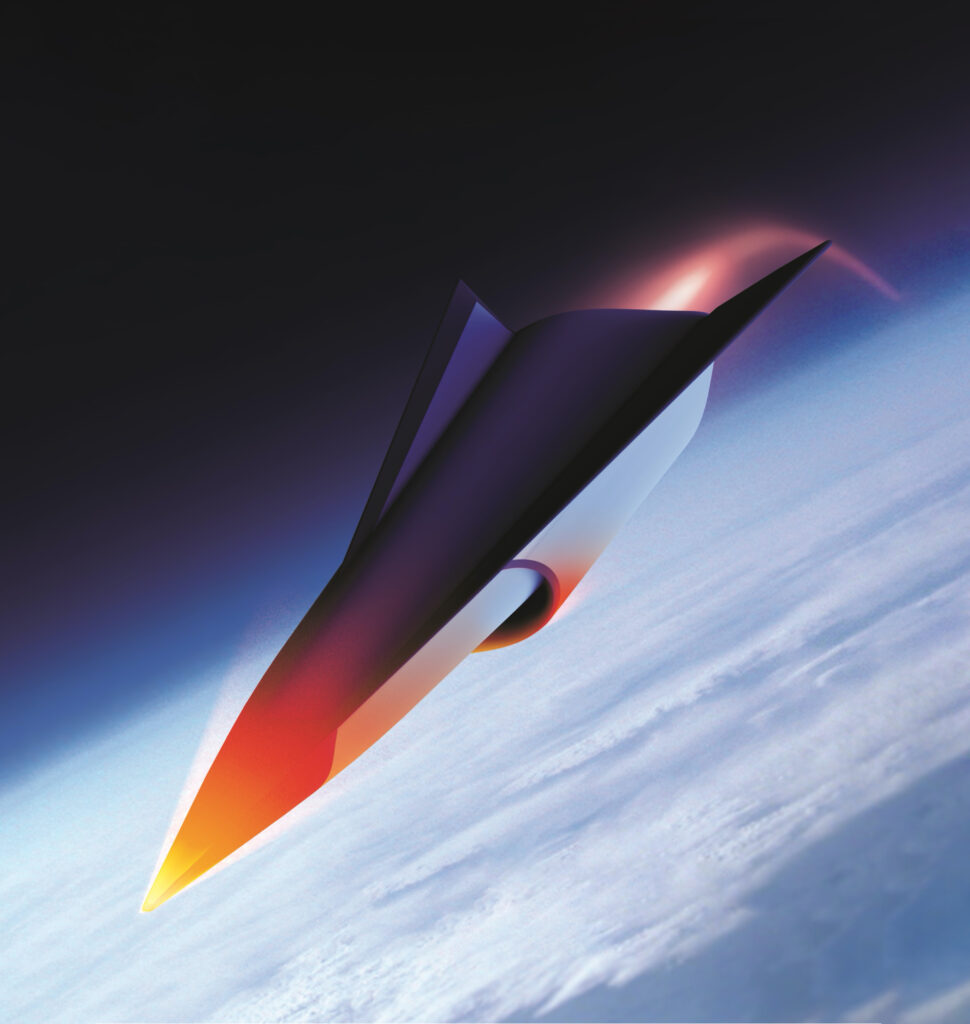
Last November, Atlanta-based aviation firm Hermeus demonstrated their turbine-based combined cycle Chimera engine could successfully transition from turbojet to ramjet power in a high-speed wind tunnel. About a month later, Virginia-based Leidos secured a $334 million contract from the Air Force Research Lab to continue development on an even more capable turbofan-to-scramjet design that would function similarly but could potentially achieve much higher speeds. And most secretive of all, Lockheed Martin announced success in ground-testing a similar turbofan-to-dual-mode-scramjet design with Aerojet Rocketdyne back in 2017 as part of the now highly secretive SR-72 program.
But while each of these designs is quite promising, this new announcement out of GE Aerospace may represent the most promising combined cycle hypersonic propulsion system revealed to date, as it incorporates a similar turbofan-to-dual mode scramjet as the SR-72 and Mayhem efforts, but adds elements of yet another exotic propulsion system into the mix, in the form of a rotating detonation engine.
This addition could help to overcome the biggest technical hurdle Lockheed Martin’s SR-72 program was known to face while still publicly disclosed: Bridging the gap between speeds attainable under turbofan power (which begin to drop in efficiency above Mach 2) and scramjet power (which function less efficiently at speeds below Mach 4).
Based on GE’s claims, their Hypersonic Dual-Mode Ramjet with Rotating Detonation Combustion engine could not only achieve similar or even greater speeds as other hypersonic engine designs, but could offer a significant boost in fuel economy — and as a result, range — in what may prove to be an overall smaller and lighter package.
This program has been underway for only about a year, according to the GE press release, but has matured rapidly thanks, in part, to GE’s acquisition of hypersonic-focused Innoveering LLC, last year. Inoveering brought a great deal of experience developing high-speed inlet designs, which play a vital role in the function of any jet engine. In a dual-mode scramjet, the inlet geometry must not only be precise but often also needs to be adjustable to manage the placement of shockwaves in the airstream at different flight speeds (more on that later).
GE now believes they will be able to demonstrate this exotic new engine system as soon as next year.
Related: The SR-72 timeline: From initial design to ‘Top Gun’s’ Darkstar and beyond
What is a Rotating Detonation Engine?
In its simplest form, a rotating detonation engine (RDE) is a propulsion system that offers greater efficiency than traditional air-breathing jet engines thanks to a more effective means of ignition.
In some ways, a Rotating Detonation Engine is an extension of Pulse Detonation Engines (PDEs), which are, in themselves, an extension of Pulsejets. While this lineage may seem confusing, walking through each of them as developmental steps may make it easier to wrap our heads around how RDEs work.
Pulsejet engines work by mixing air and fuel within a combustion chamber and then igniting the mixture to fire out of a nozzle in rapid pulses, rather than under consistent combustion as you might find in other jet engines. In pulsejet engines, as in nearly all combustion engines, the way in which the air/fuel mixture burns is known as deflagration. In simple terms, deflagation means heating a substance until it burns away rapidly, but at subsonic speeds.
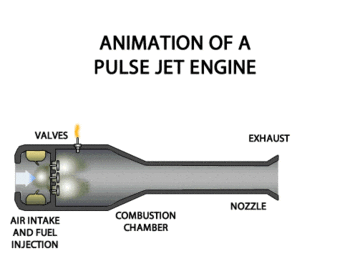
A pulse detonation engine works similarly, but instead of leveraging deflagration, it uses detonation. At a fundamental level, detonation is a lot like it sounds: an explosion. In contrast to deflagration, in detonation, the air/fuel mixture burns at supersonic speeds.
“You can get more efficiency by cramming all that reaction during a really short time in space. There’s, at least from a thermodynamic standpoint, potential for much higher efficiencies in engines that burn through detonation rather than deflagration,” Dr. Chris Combs, a Dee Howard endowed professor of hypersonic and aerospace engineering for the University of Texas San Antonio, told Sandboxx News.
When the air and fuel are mixed in a Pulse Detonation Engine, they’re ignited, creating deflagration like in any other combustion engine, but within the longer exhaust tube leading out of the engine, a powerful pressure wave compresses any unburnt fuel ahead of the ignition, heating it above ignition temperature in what is known as the deflagration-to-detonation transition (DDT). In other words, rather than burning through the fuel rapidly, the mixture explodes, producing more thrust from the same amount of fuel.

In pulse-detonation engines (PDEs), the air/fuel mixture ignition still occurs in pulses, just like a pulsejet, but the detonation method allows them to propel vehicles to higher speeds, believed to be around Mach 5. Because detonation releases more energy than deflagration, detonation engines are also more efficient, producing more thrust with less fuel.
A rotating detonation engine takes that PDE concept to the next level. Rather than having the detonation wave travel out the back of the aircraft as propulsion, it travels around a circular channel within the engine itself. Fuel and oxidizers are added to the channel through small holes, which are then struck and ignited by the rapidly circling detonation waves. According to Dr. Combs, it’s not uncommon for a rotating detonation engine to have three to five of these detonation waves circling the chamber at once.
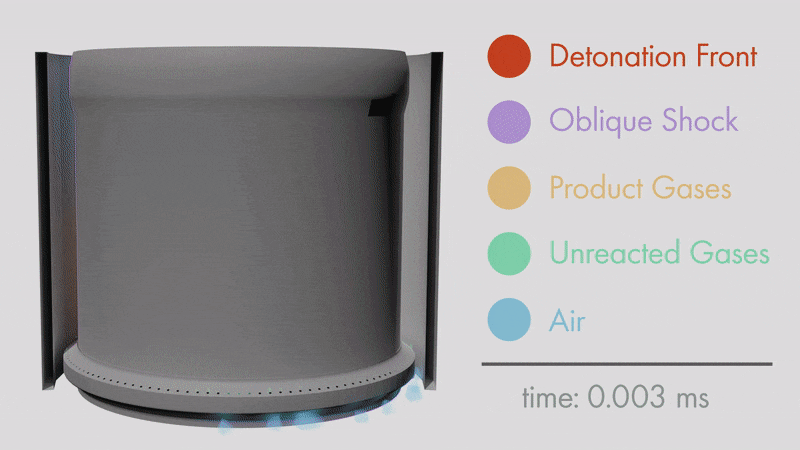
The result is an engine that produces continuous thrust, rather than thrust in pulses like a PDE, while also offering the improved efficiency of detonation combustion, rather than deflagration, as you’d find in a conventional jet engine.
This sort of engine design alone can provide a great deal of power in a fuel-efficient package, which is why DARPA (the Defense Advanced Research Projects Agency), is actively developing an RDE to power its Gambit Missile.
But GE Aerospace has found a way to incorporate this Rotation Detonation Combustion (RDC) process into its dual-mode ramjet, and GE also claims to be working toward incorporating the RDC process into its turbofan technology as well. This may just solve two of the most pressing challenges facing hypersonic aircraft propulsion today: First, managing the transition from turbofan to scramjet power; and second, reducing the weight associated with turbine-based combined-cycle (TBCC) engines.
But before we can address that, let’s briefly run through what a TBCC engine is.
Related: DARPA’s new missile hints at truly game-changing technology
How do turbine-based combined cycle engines work?
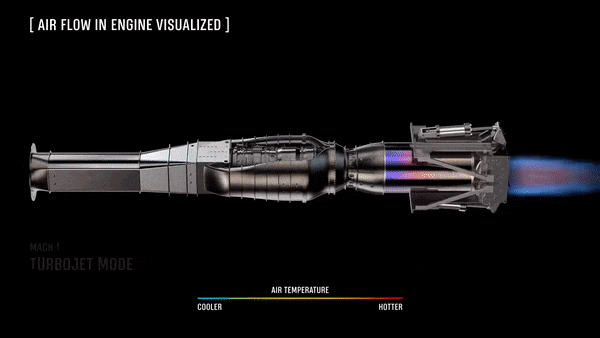
Firms like Hermeus and Leidos are currently working to field hypersonic aircraft that incorporate two different kinds of air-breathing jet engines into one: Low-speed engines like turbojets and turbofans, and high-speed engines like ramjets and scramjets. This combination speaks to the innate challenges of managing airflow at speeds ranging from a dead stop, all the way up into the high-supersonic regime.
Turbojets and turbofans, the types of air-breathing jet engines that power many of today’s tactical aircraft, use a compressor fan near the inlet to suck air into the engine and compress it, before mixing that compressed air with fuel and igniting it for propulsion. As a result, these kinds of engines can work from a dead stop to accelerate an aircraft down a runway for takeoff and can continue to accelerate up to around Mach 2 very effectively. But, they begin to see a drop-off in efficiency as they approach Mach 3. At that speed, the compressor at the front of the engine that’s meant to suck in and compress air instead becomes a hindrance to the air flowing in at the speed of the aircraft’s forward travel, limiting the engine’s efficiency.
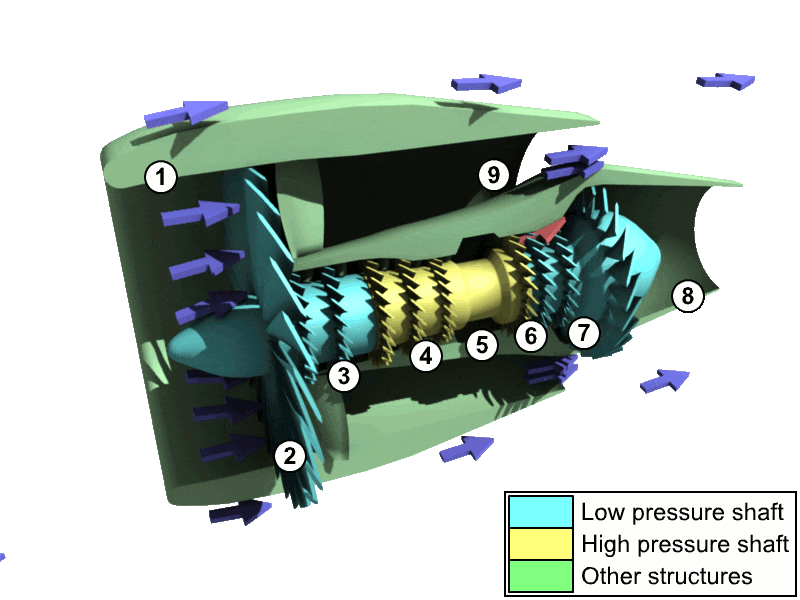
Ramjets and scramjets, on the other hand, have no compressor (or often any moving parts at all), and as such, can’t function at a stop and are very inefficient at lower speeds. But at speeds above Mach 3, these engines come alive — using the immense pressure of inflowing air and, importantly, the shockwaves created through intentional inlet design, to compress the air before it is mixed with fuel to be ignited for propulsion.
“You’ve got an inlet, and you have a shock that hits in that Inlet, and then you design these geometries so you get a shock system that bounces around inside,” Dr. Combs explained to Sandboxx News. “As the air goes through each one of those shocks, the pressure goes up, and then by the time you get to your combuster, you have this very high-pressure gas that you’re ready to light.”
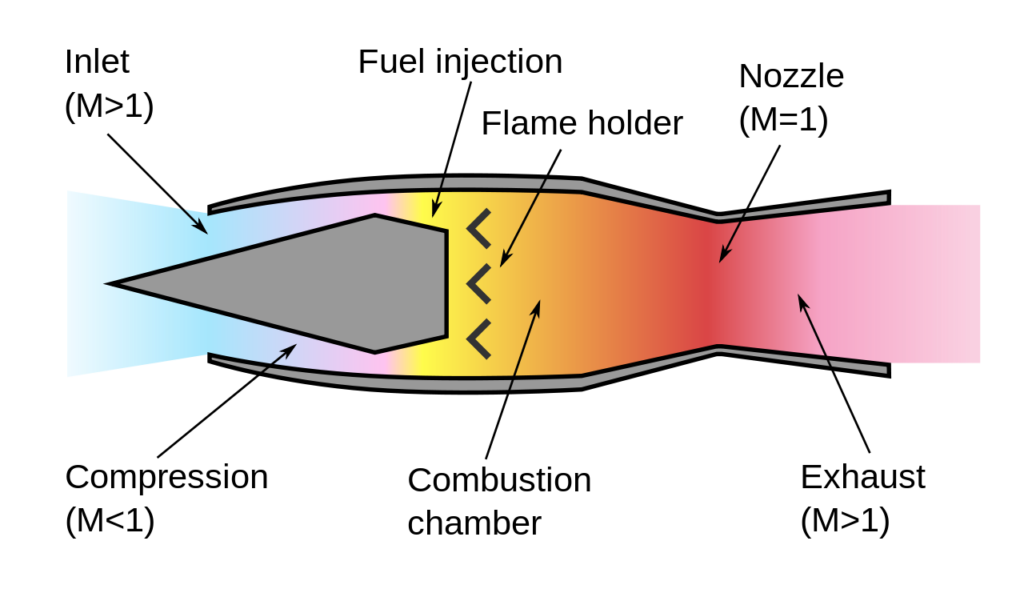
Ramjets like the one used by Hermeus, are an older and more proven technology that slows inflowing air down to subsonic speeds for more manageable ignition. As a result, ramjets can often function at lower speeds (sometimes as low as Mach 2), using either a blocking body or intentional inlet geometry to create shockwaves that sufficiently slow the inflowing air. This slower airflow does make ramjets easier to ignite but also limits their maximum achievable speeds. It’s generally believed that Ramjets will top out at speeds of around Mach 6.
More modern scramjets, on the other hand, allow for supersonic airflow throughout the engine, though the geometric design of the inlet is still very intentional.
“You’ve got a shock system, but it never actually shocks all the way down to subsonic speed,” Dr. Combs explained.
This faster-flowing air makes ignition a significant engineering challenge that’s often compared to trying to light a match in a hurricane. But once you overcome this challenge, scramjets are generally believed to be capable of achieving speeds of Mach 10 or higher.
A dual-mode ramjet (also called dual-mode scramjet), like the one GE Aerospace recently used in its bench testing, is effectively a single air-breathing engine that can function as either a ramjet or a scramjet depending on the speed of the air flowing into it.

How exactly dual-mode ramjets manage this transition depends on the specific engine, but as Dr. Combs explained, both ramjets and scramjets function using “basically the same concept,” making it possible to design an engine that can function as a ramjet at lower speeds and a scramjet at higher speeds by changing the geometry of the inlet to create the appropriate “shock system” (series of shockwaves) for each flight regime.
When you combine one of the lower-speed jet engines (turbojet or turbofan) with one of these higher-speed ones (ramjet or scramjet), you get what’s commonly called a turbine-based combined cycle (TBCC) engine. Such an engine would allow an aircraft to take off using the lower-speed engine, transition to the high-speed engine for operational flight, and then transition back to the low-speed engine for landing.
Today, we’re aware of at least three American-based efforts to develop and field such an engine. Hermeus’s Chimera is a turbojet/ramjet design, though the firm has plans to field a larger and more capable turbofan/ramjet system known as Chimera II soon. Leidos has been more tight-lipped about their efforts tied to the Air Force Research Lab’s Mayhem program, though it’s understood the effort aims to field a more advanced turbofan/scramjet system.
And then of course, Lockheed Martin claimed to have success with their own turbofan/dual-mode scramjet engine, designed in coordination with Aerojet Rocketdyne, back in 2017. Interestingly enough, this design was said to be experimenting with both Pratt & Whitney F100 and GE F110 turbofans as its turbine basis, though progress on this effort has since been shrouded in secrecy since the program went dark at the onset of the modern hypersonic arms race.
GE Aerospace has admittedly not been among the big-name firms in the race to field hypersonic aircraft to date, but their ability to incorporate far more efficient rotating detonation combustion into these engine designs could allow them to not only catch up, but rapidly take the lead in this field.
Related: SR-72? Hints of a new Skunk Works spy plane reignite longstanding rumors
Managing the transition
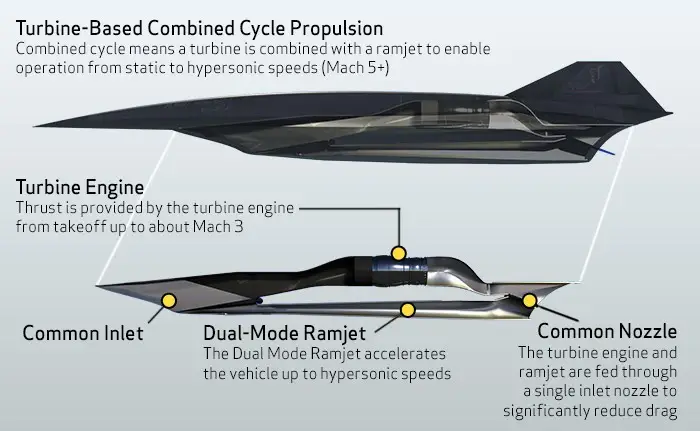
As Lockheed Martin’s Hypersonics Program Manager and the director of the SR-72 program, Brad Leland, explained in 2013, the transition from turbofan to scramjet power is a significant challenge because of the gap in the speed ranges each engine can function efficiently.
“The turbine, which works well up to Mach 2, and the scramjet (supersonic combustion ramjet) work well at Mach 4 and above. By making those work together down at Mach 3 – below Mach 3 – that’s really the key,” Leland said at the time.
GE’s press release echoes this sentiment, highlighting that their dual-mode ramjet could normally only function efficiently at speeds above Mach 3, but by incorporating rotating detonation combustion (RDC) — effectively a ring of perpetual detonation circling the combustion chamber — it should be able to operate at lower speeds, helping to bridge the gap between turbofan and dual-mode ramjet power.
But GE isn’t stopping at adding RDC to their dual-mode ramjet. They also intend to incorporate this technology into their high-powered turbofan engines, which could allow these lower-speed engines in their combined cycle design to achieve higher speeds more efficiently, which also helps to bridge the gap between efficient speeds for the turbofan and dual-mode ramjet.
This turbofan design could also have significant implications for non-hypersonic tactical aircraft as well. In 2020, GE filed a patent for a turbofan engine equipped with a rotating detonation afterburner, which would offer a significant increase in airflow pressure, speed, and temperature ducted through bypass tubes directly into the engine’s afterburner. The design included a variety of heat-management measures intended to reduce the temperature of that airflow, ranging from inlet precoolers to porous flow path liner walls that would expose the airflow to cooling fluids.
Such an RDC afterburner could certainly help increase the speeds a turbofan engine can achieve, further bridging the velocity gap between turbofan and dual-mode scramjet, but importantly, could also apply to non-TBCC engines as well. An RDC afterburner used on conventional turbofan engines powering today’s tactical fighters could allow for higher top speeds and greater fuel efficiency — both of which are aims for 6th generation fighters in active development.
And the use of RDC in both the turbofan and the dual-mode ramjet could also have another significant benefit…
Related: Lasers won’t save us from hypersonic weapons
Reducing weight
One of the biggest challenges to fielding an effective TBCC engine is weight. Weight is always a concern in aircraft design, but the issue becomes even more pronounced when your aircraft is forced to carry more than one form of engine. When flying under turbojet or turbofan power, the ramjet/scramjet is nothing but dead weight and vice versa. But engines that use rotating detonation combustion can help to offset this weight issue.
“RDC enables higher thrust generation more efficiently, at an overall smaller engine size and weight, by combusting the fuel through detonation waves instead of a standard combustion system that powers traditional jet engines today,” GE says in their write-up about their new engine.
This could also allow for a shorter overall engine length, Dr. Combs explained, which is another important consideration for aircraft design, as larger internal space requirements lead to larger overall aircraft designs — which means more material and as such, even more weight.
And perhaps most importantly, more efficient engines reduce fuel requirements or extend ranges for the same amount of fuel carried. This would be essential for any Intelligence, Surveillance, and Reconnaissance (ISR) or precision-strike platform, which would need to cover great distances.
The SR-71’s unrefueled range of 2,500 miles required an internal load of 80,000 pounds of fuel, for example. While it’s difficult to predict fuel economy for GE’s experimental new engine design in an aircraft, it stands to reason that it would be far more efficient but would aim for significantly higher speeds, making the balance of weight to range just as essential as it is in supersonic designs.
While Dr. Combs is not involved with GE’s RDC Dual-Mode Ramjet or TBCC engine programs, he posits that such a design could potentially propel an aircraft beyond Mach 10 and potentially even as high as Mach 12.
“If these work as they’re supposed to and as the thermodynamics of all this type of stuff says that they should, then yeah, I think that there could be practical applications for this technology,” Dr. Combs said when we asked if this could produce aircraft with sufficient fuel range to be of use to the U.S. military.
Related: US announces successful tests of 3 hypersonic missiles in 2 weeks
GE just became a heavyweight in the hypersonic aircraft race
According to GE, they managed to come this far in just 12 months, and now expect to be able to conduct a full demonstration of their DMRJ (dual mode ramjet) with RDC (Rotation Detonation Combustion) as soon as next year… Which, upon their release, isn’t all that far out at all.
Thus far, GE has not offered any timeline regarding a TBCC engine that would combine their RDC dual-mode ramjet with a similarly RDC-equipped turbofan, though we know for certain that it’s something they’re exploring. If and when such an engine manifests, however, there will still be the challenge of producing an airframe around it that can withstand the friction, heat, and pressure of hypersonic flight.
It’s not impossible that we’d see such an engine incorporated into other experimental efforts, like Lockheed Martin’s secretive SR-72 program that has been rumored to be having its program objectives “rescoped.” Conversely, we could feasibly see this engine concept incorporated into an entirely new aircraft design as well.
But regardless of how this engine program ultimately manifests, one thing is clear: hypersonic aircraft are coming, and we’re getting a bit closer every day.
Read more from Sandboxx News
- Fighter pilot breaks down how aerial refueling works
- How an F-16 dodged 6 surface-to-air missiles in an airstrike gone wrong
- The Air Force created a F-35 ‘Frankenbird’ for the first time – with help from the A-10
- NORAD will track Santa’s hypersonic gift-delivery operations
- The mystery surrounding HK’s SMG 2 and its purpose
Related Posts
Sandboxx News Merch
-

A-10 ‘Thunderbolt Power’ Poster
$22.00 – $28.00 Select options This product has multiple variants. The options may be chosen on the product page -

A-10 ‘Warthog’ Poster
$22.00 – $28.00 Select options This product has multiple variants. The options may be chosen on the product page -
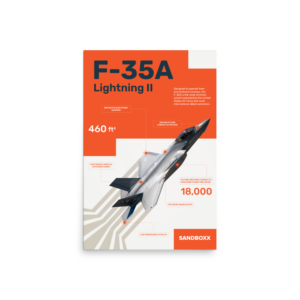
F-35 ‘Lightning’ Poster
$22.00 – $28.00 Select options This product has multiple variants. The options may be chosen on the product page

Alex Hollings
Alex Hollings is a writer, dad, and Marine veteran.
Related to: Airpower, Gear & Tech
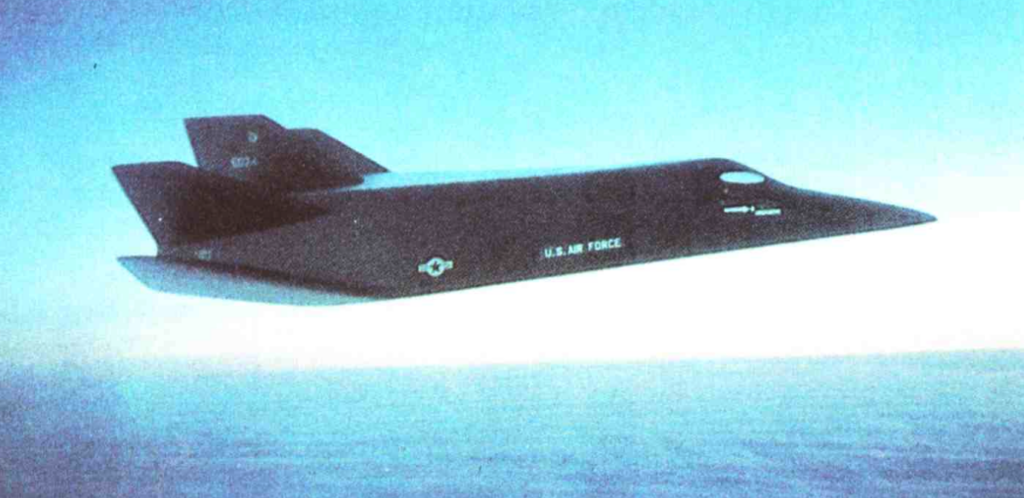
Game-changing military aircraft that were canceled before they could change the game
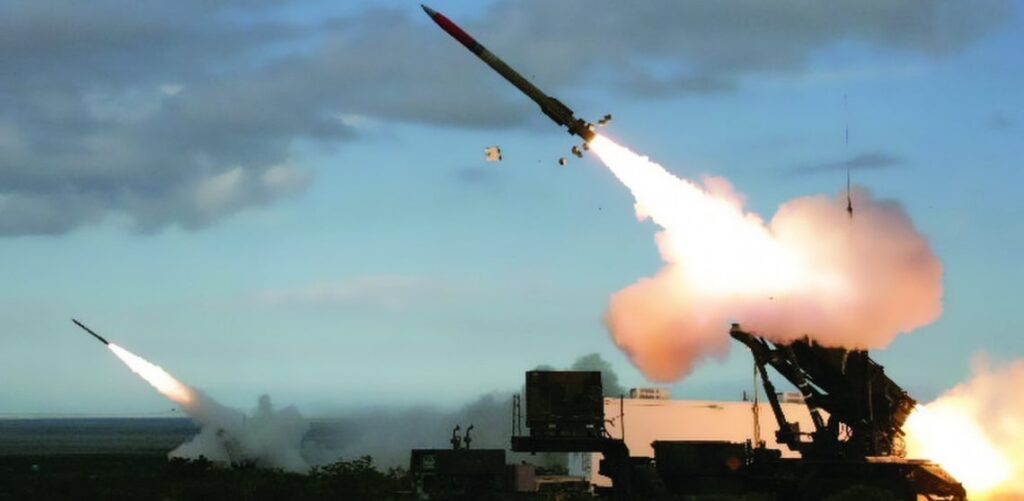
The ultimate guide to the Patriot air defense system
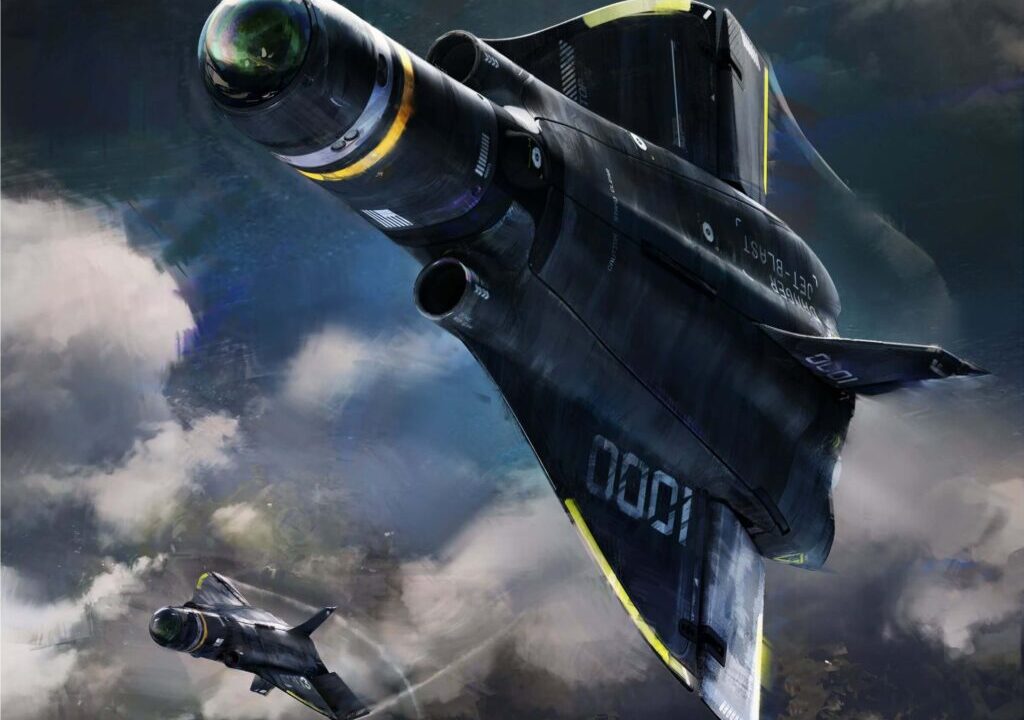
Anduril’s Roadrunner is a unique reusable missile interceptor
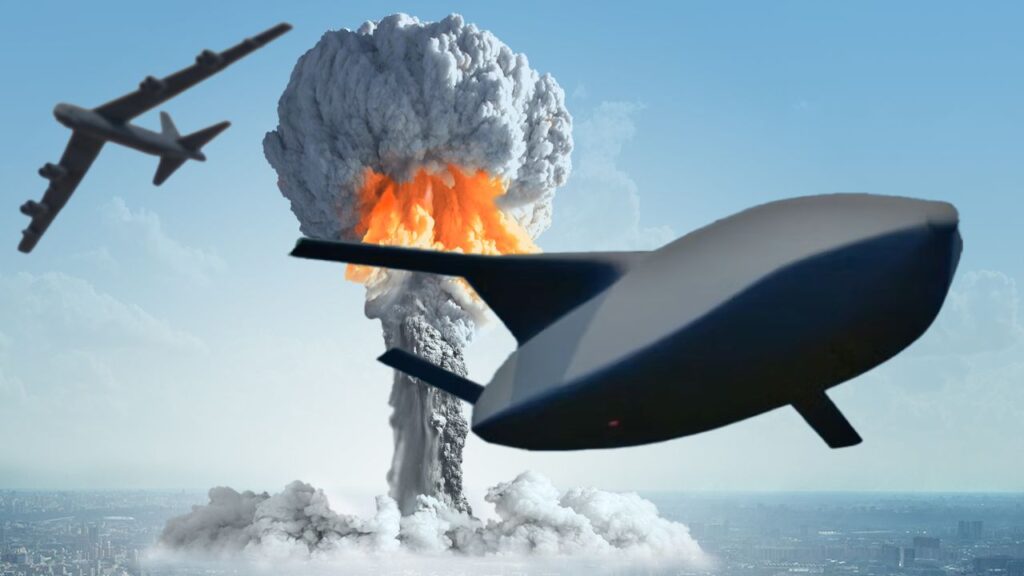
The AGM-181 LRSO missile will modernize America’s nuclear triad
Sandboxx News
-

‘Sandboxx News’ Trucker Cap
$27.00 Select options This product has multiple variants. The options may be chosen on the product page -

‘AirPower’ Classic Hoodie
$46.00 – $48.00 Select options This product has multiple variants. The options may be chosen on the product page -

‘AirPower’ Golf Rope Hat
$31.00 Select options This product has multiple variants. The options may be chosen on the product page -

‘Sandboxx News’ Dad Hat
$27.00 Select options This product has multiple variants. The options may be chosen on the product page
